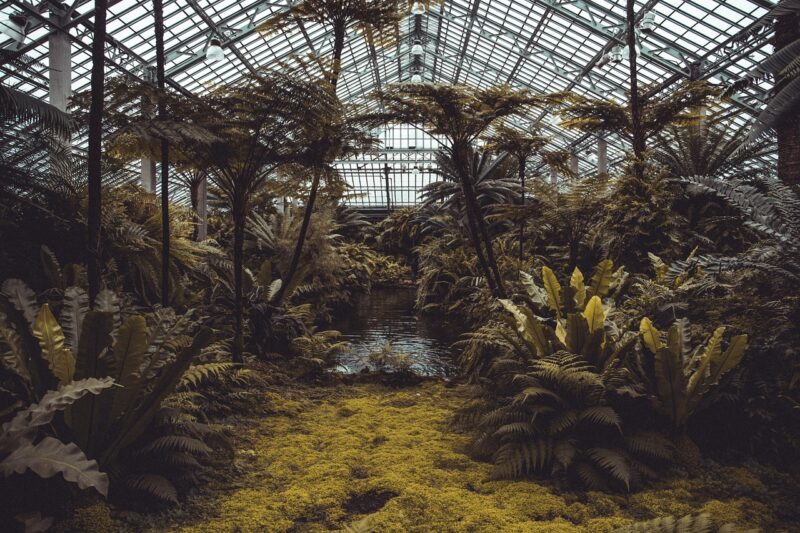The World’s Most Endangered Ecosystems and What’s Being Done to Save Them
November 16, 2024

Ecosystems around the globe face unprecedented challenges, and many of them are now classified as endangered. From vibrant coral reefs to lush rainforests, these ecosystems play a crucial role in maintaining the Earth’s biodiversity and supporting human life. Understanding why these ecosystems are at risk and what efforts are being made to protect them is vital for our planet’s future.
1. What Are Ecosystems and Why Are They Important?
An ecosystem is a community of living organisms, including plants, animals, and microorganisms, interacting with their non-living environment—like air, water, and soil. These intricate relationships form a balance essential for the survival of life on Earth.
Some reasons why ecosystems are vital include:
- Biodiversity: Ecosystems support a vast array of species, which helps maintain genetic diversity and resilience against environmental changes.
- Climate Regulation: Ecosystems, particularly forests and wetlands, play a significant role in regulating the Earth’s climate by sequestering carbon dioxide and producing oxygen.
- Water Purification: Wetlands and forests filter pollutants and improve water quality, providing clean water for human consumption and agriculture.
- Cultural Significance: Many ecosystems hold cultural and historical significance for communities around the world, contributing to human identity and heritage.
However, due to human activities such as deforestation, pollution, and climate change, many ecosystems are deteriorating at alarming rates. Below, we explore the most endangered ecosystems worldwide and the actions being taken to safeguard them.
2. The World’s Most Endangered Ecosystems
Several ecosystems are critically endangered, and their loss would have devastating impacts on global biodiversity and the health of our planet. Here are some of the most at-risk ecosystems:
a. Coral Reefs
Coral reefs, often referred to as the “rainforests of the sea,” are among the most diverse ecosystems on the planet. However, they are highly sensitive to environmental changes and are severely affected by:
- Rising ocean temperatures: Leading to coral bleaching and mortality.
- Acidification: Resulting from increased carbon dioxide levels, which weaken coral structures.
- Pollution: Nutrient run-off promotes algal blooms that suffocate corals.
Efforts to protect coral reefs include marine protected areas (MPAs), restoration projects, and legislation to reduce carbon emissions and pollution.
b. Tropical Rainforests
Tropical rainforests, such as the Amazon and the Congo Basin, are vital for biodiversity and climate regulation. However, they are facing mass deforestation due to agriculture, logging, and urbanization. To combat this depletion, organizations are promoting:
- Sustainable forestry practices to minimize logging impacts.
- Agroforestry to integrate agriculture with forest conservation.
- Reforestation initiatives to restore areas that have been deforested.
c. Wetlands
Wetlands are essential for water purification, flood control, and providing habitat for numerous species. Unfortunately, they are being drained for agriculture and development. Global action to save wetlands includes:
- Establishing Ramsar Sites, which are recognized as critical for conservation.
- Restoration projects aimed at re-establishing natural hydrology and biodiversity.
d. Grasslands
Grasslands are experiencing habitat loss from urbanization and agricultural expansion. They play a critical role in carbon storage and biodiversity. Some efforts include:
- Promoting sustainable grazing practices to prevent overgrazing and land degradation.
- Conversion of degraded farmland back into grasslands and other native vegetation.
3. What’s Being Done to Protect These Ecosystems?
Several global initiatives and agreements focus on conserving endangered ecosystems. Here are some notable efforts:
a. The Convention on Biological Diversity (CBD)
This international treaty aims to conserve biological diversity, promote sustainable development, and share benefits arising from genetic resources. Countries are encouraged to establish protected areas as part of their commitment to biodiversity conservation.
b. The Paris Agreement
Focused mainly on climate change, the Paris Agreement recognizes the interlinkage between climate change and ecosystem health. By reducing greenhouse gas emissions, this agreement indirectly helps preserve ecosystems vulnerable to climate fluctuation.
c. Local Conservation Programs
Various local initiatives are underway worldwide, including:
- Community-based conservation that empowers local communities in preserving their natural resources.
- Engaging indigenous populations in sustainable land management practices that respect both their traditions and the environment.
d. Environmental Education and Advocacy
Raising awareness about the importance of ecosystems is a critical step in conservation. Environmental education initiatives aim to educate the public on:
- The importance of biodiversity and ecosystems to our daily lives.
- Encouraging sustainable choices and behaviors to protect the environment.
4. How Can You Help?
Individuals can play a meaningful role in conservation efforts. Here are ways to get involved:
- Educate Yourself: Learn about local ecosystems and endangered species in your area to spread awareness in your community.
- Support Conservation Organizations: Donate to nonprofits dedicated to protecting endangered ecosystems and biodiversity.
- Practice Sustainable Living: Make sustainable choices in your daily life, such as reducing waste, conserving water, and supporting eco-friendly products.
- Advocate for Policy Change: Engage with local and national policies aimed at promoting conservation and reducing environmental degradation.
Conclusion
The fate of the world’s most endangered ecosystems rests not only on global leaders but also on individual action. As awareness grows and investments in conservation increase, there is a hope for restoring these critical ecosystems and ensuring they continue to thrive. It is a collective responsibility to safeguard these irreplaceable resources for future generations and maintain the balance of life on Earth.







